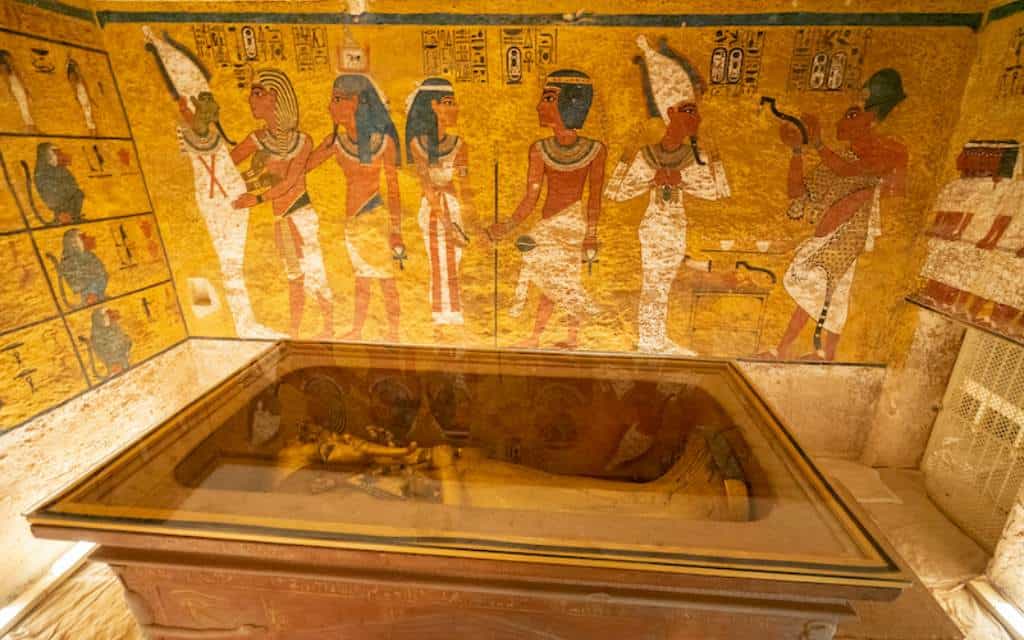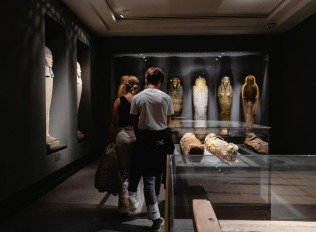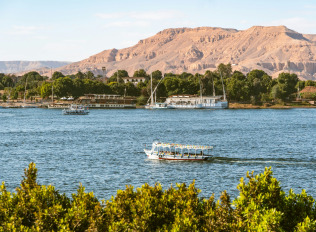In the silent sands of Egypt’s Valley of the Kings, beneath centuries of dust and forgotten tombs, lay a mystery that would captivate the world. When British archaeologist Howard Carter first peered through a small chiseled hole in a sealed doorway in 1922, his breath caught. “Can you see anything?” his patron asked. Carter’s response: “Yes—wonderful things.”
It was a moment that would echo through history, a discovery that would leave the world in awe. He had uncovered the tomb of Tutankhamun, a young pharaoh whose name would echo louder in death than it ever did in life.

A Short Reign, a Lasting Legacy
Tutankhamun came to the throne around 1332 BCE, at the young age of nine, during one of ancient Egypt's most turbulent times. His father, the heretic pharaoh Akhenaten, had upended centuries of tradition by introducing monotheism and moving the capital to a new city. When Tutankhamun ascended the throne, he and his advisors quickly began to restore order—reinstating the traditional gods, reestablishing Thebes as a center of power, and undoing the divisive reforms of his father. Though his rule was short-lived, it marked a period of calm restoration amid turmoil—a quiet yet powerful symbol of renewal during uncertain times
His reign, though brief (he died around age 18 or 19), was a moment of quiet correction in an era of upheaval. Yet in the great scroll of Egyptian rulers, Tutankhamun was a minor figure. What changed everything was what came after.
The Tomb That Time Forgot
Unlike the lavish, plundered resting places of other pharaohs, Tutankhamun’s tomb (KV62) was modest and nearly intact. Uniquely preserved, hidden from robbers for over 3,000 years, was a marvel in itself. When Carter discovered it, he unearthed not only the golden funerary mask that would become an icon of ancient Egypt, but over 5,000 artifacts—from jeweled daggers to ceremonial chariots, games, food, and even linen undergarments.
These weren’t just treasures—they were time capsules. Every item painted a vivid picture of life, death, and belief in the afterlife in ancient Egypt.
A King Reborn in Modern Times
Tutankhamun's discovery sparked a global obsession. Newspapers called it “The Curse of the Pharaoh,” after several associated deaths fueled public fascination. Museums scrambled for Egyptology departments. Art Deco designers borrowed motifs from his gold and lapis regalia. Even over a century later, his name continues to fill exhibition halls and headlines.
And now, with the opening of the Grand Egyptian Museum his entire collection is on display together for the first time in history. This state-of-the-art museum, located just a few kilometers from the Great Pyramids, offers a unique and immersive experience. Meticulously restored and thoughtfully curated, these treasures will no longer travel the world in touring exhibits—they have a permanent home.
Why He Still Matters
Tutankhamun may not have changed the course of history during his short life, but in death, he became a symbol of ancient splendor and archaeological triumph. He reminds us that greatness isn't always measured by deeds alone—but sometimes by the stories we leave behind, waiting to be rediscovered.
So the next time you see that golden mask, remember: it's not just a relic. It's a whisper from a young king, across millennia, saying, “I was here. And I still matter.”
Planning a trip to Egypt? Be sure to visit the Grand Egyptian Museum —just minutes from the iconic pyramids—where Tutankhamun's treasures are now showcased in a world-class setting. This isn't just a museum visit; it's a step into eternity.
About the author

Subscribe
-
 A Seat at the Edge of Space, Inside Zephalto’s Vision of the Ultimate Journey
A Seat at the Edge of Space, Inside Zephalto’s Vision of the Ultimate Journey -
 My Dubai First Christmas
My Dubai First Christmas -
 Komodo Island, a Reminder of Nature Unchecked
Komodo Island, a Reminder of Nature Unchecked -
 Scidmore Sakura, Where Blossoms Bridge Worlds and Generations
Scidmore Sakura, Where Blossoms Bridge Worlds and Generations -
 Editor's Note, Leave It Better Than You Found It
Editor's Note, Leave It Better Than You Found It
















Leave a Reply